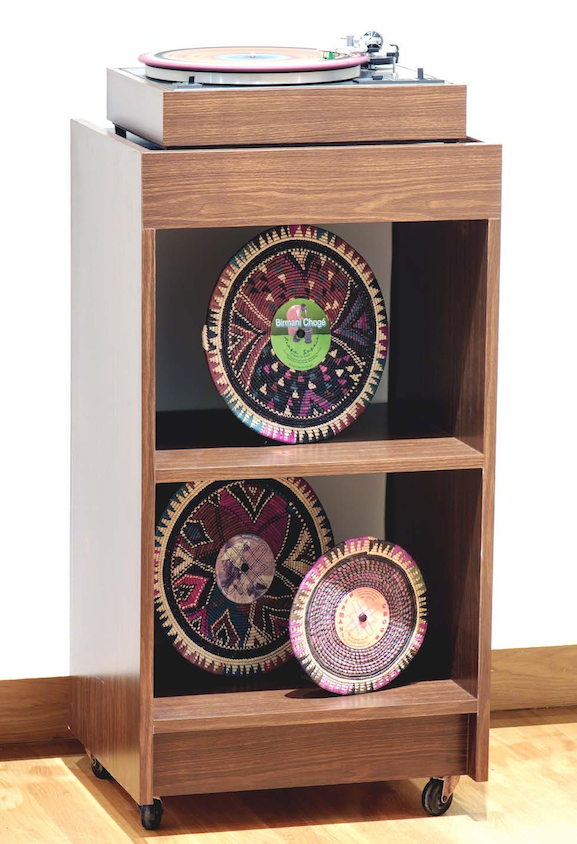Fai-Fain Gramophone

Fatimah Tuggar, (b. 1967 Kaduna, Nigeria), Fai-Fain Gramophone, 2010, Record Player, raffia disks with labels, music by Barmani Choge, Entertainment Center, 53 X 32 ½ X 24 inches, Museum purchase, The Dorothy Johnston Towne (Class of 1923) Fund 2019.944, Courtesy of Fatimah Tuggar and BintaZarah Studios
One of Fatimah Tuggar’s best known works, Fai-Fain Gramophone demonstrates the hallmarks of her style: a thorough conceptual approach, a multimedia collage aesthetic, and an inventive use of humor. The sculpture is made up of a record player installed on a custom-built rolling cabinet. On the player, a raffia disk, or fai-fai, spins, while inside the sculpture an .mp3 player projects the music of Northern Nigerian musician Barmani Choge (1945-2013). The hand woven disks feature record labels from Choge, who, with her band of women playing kitchen tools as musical instruments, sang about women’s lives. The central joke of the sculpture is conveyed through word play and historical allusion. When records first arrived in Northern Nigeria, people named them “fai-fain gramophone” after the round, flat fai-fai disks. A fai-fai is a tool made by women for women that can be used in many ways: it can be a sieve, a trivet, a girdle and more. By playfully putting the fai-fai and the record in conversation with Choge’s music, Tuggar’s sculpture invites contemplation about how women have and continue to make their homes within a changing global economy.